Preliminary In Vitro Evaluation of Silver, Copper and Gold Nanoparticles as New Antimicrobials for Pathogens That Induce Bovine Locomotion Disorders
Abstract
1. Introduction
2. Results
2.1. Identification of the Isolated Bacteria
2.2. Determination of the NPs’ Morphology
2.3. Determination of the Physicochemical Properties of NPs
2.4. Bacterial Viability Analysis
3. Discussion
4. Materials and Methods
4.1. Isolated Bacteria Cultures
4.2. The Morphology of NPs
4.3. The Physicochemical Properties of NPs
4.4. Bacterial Viability
4.5. Statistical Analysis
5. Conclusions
Author Contributions
Funding
Institutional Review Board Statement
Informed Consent Statement
Data Availability Statement
Conflicts of Interest
References
- Van Nuffel, A.; Zwertvaegher, I.; Pluym, L.; Van Weyenberg, S.; Thorup, V.M.; Pastell, M.; Sonck, B.; Saeys, W. Lameness detection in dairy cows: Part 1. How to distinguish between non-lame and lame cows based on differences in locomotion or behavior. Animals 2015, 5, 838–860. [Google Scholar] [CrossRef]
- Afonso, J.S.; Bruce, M.; Keating, P.; Raboisson, D.; Clough, H.; Oikonomou, G.; Rushton, J. Profiling detection and classification of lameness methods in British dairy cattle research: A systematic review and meta-analysis. Front. Vet. Sci. 2020, 7, 542. [Google Scholar] [CrossRef]
- Langova, L.; Novotna, I.; Nemcova, P.; Machacek, M.; Havlicek, Z.; Zemanova, M.; Chrast, V. Impact of nutrients on the hoof health in cattle. Animals 2020, 10, 1824. [Google Scholar] [CrossRef] [PubMed]
- Ramanoon, S.Z.; Sadiq, M.B.; Shaik Mossadeq, W.M.; Mansor, R.; Syed-Hussain, S.S. The impact of lameness on dairy cattle welfare: Growing need for objective methods of detecting lame cows and assessment of associated pain. Anim. Welf. 2018, 10, 51–72. [Google Scholar] [CrossRef]
- Palmer, M.A.; O’Connell, N.E. Digital dermatitis in dairy cows: A review of risk factors and potential sources of between-animal variation in susceptibility. Animals 2015, 5, 512–535. [Google Scholar] [CrossRef]
- Zinicola, M.; Lima, F.; Lima, S.; Machado, V.; Gomez, M.; Döpfer, D.; Guard, C.; Bicalho, R. Altered microbiomes in bovine digital dermatitis lesions, and the gut as a pathogen reservoir. PLoS ONE 2015, 10, e0120504. [Google Scholar] [CrossRef] [PubMed]
- Blackie, N.; Maclaurin, L. Influence of lameness on the lying behaviour of zero-grazed lactating jersey dairy cattle housed in straw yards. Animals 2019, 9, 829. [Google Scholar] [CrossRef] [PubMed]
- Coetzee, J.F.; Shearer, J.K.; Stock, M.L.; Kleinhenz, M.D.; van Amstel, S.R. An update on the assessment and management of pain associated with lameness in cattle. Vet. Clin. Food Anim. Pract. 2017, 33, 389–411. [Google Scholar] [CrossRef]
- Saleem, M.; Deters, B.; de la Bastide, A.; Korzen, M. Antibiotics overuse and bacterial resistance. Ann. Microbiol. Res. 2019, 3, 93. [Google Scholar] [CrossRef]
- Garvey, M. Lameness in dairy cow herds: Disease aetiology, prevention and management. Dairy 2022, 3, 199–210. [Google Scholar] [CrossRef]
- Mubeen, B.; Ansar, A.N.; Rasool, R.; Ullah, I.; Imam, S.S.; Alshehri, S.; Ghoneim, M.M.; Alzarea, S.I.; Nadeem, M.S.; Kazmi, I. Nanotechnology as a novel approach in combating microbes providing an alternative to antibiotics. Antibiotics 2021, 10, 1473. [Google Scholar] [CrossRef] [PubMed]
- Slavin, Y.N.; Asnis, J.; Hńfeli, U.O.; Bach, H. Metal nanoparticles: Understanding the mechanisms behind antibacterial activity. J. Nanobiotechnol. 2017, 15, 65. [Google Scholar] [CrossRef]
- Monteiro, M.S.; Matias, D.N.; Poor, A.P.; Dutra, M.C.; Moreno, L.Z.; Parra, B.M.; Silva, A.P.S.; Matajira, C.E.C.; Gomes, V.T.M.; Barbosa, M.R.F.; et al. Causes of sow mortality and risks to post-mortem findings in a Brazilian intensive swine production system. Animals 2022, 12, 1804. [Google Scholar] [CrossRef]
- Queiroga, M.C. Prevalence and aetiology of sheep mastitis in Alentejo region of Portugal. Small Rumin. Res. 2017, 153, 123–130. [Google Scholar] [CrossRef]
- Sun, M.; Gao, J.; Ali, T.; Yu, D.; Zhang, S.; Khan, S.U.; Fanning, S.; Han, B. Characteristics of Aerococcus viridans isolated from bovine subclinical mastitis and its effect on milk SCC, yield, and composition. Trop. Anim. Health Prod. 2017, 49, 843–849. [Google Scholar] [CrossRef] [PubMed]
- Rzewuska, M.; Kwiecień, E.; Chrobak-Chmiel, D.; Kizerwetter-Świda, M.; Stefańska, I.; Gieryńska, M. Pathogenicity and virulence of Trueperella pyogenes: A review. Int. J. Mol. Sci. 2019, 20, 2737. [Google Scholar] [CrossRef] [PubMed]
- Dobinson, H.C.; Anderson, T.P.; Chambers, S.T.; Doogue, M.P.; Seaward, L.; Werno, A.M. Antimicrobial treatment options for granulomatous mastitis caused by Corynebacterium species. J. Clin. Microbiol. 2015, 53, 2895–2899. [Google Scholar] [CrossRef]
- Hernández-León, F.; Acosta-Dibarrat, J.; Vázquez-Chagoyán, J.C.; Rosas, P.F.; de Oca-Jiménez, R.M. Identification and molecular characterization of Corynebacterium xerosis isolated from a sheep cutaneous abscess: First case report in Mexico. BMC Res. Notes 2016, 9, 1–6. [Google Scholar] [CrossRef]
- Huygens, J.; Daeseleire, E.; Mahillon, J.; Van Elst, D.; Decrop, J.; Meirlaen, J.; Dewulf, J.; Heyndrickx, M.; Rasschaert, G. Presence of antibiotic residues and antibiotic resistant bacteria in cattle manure intended for fertilization of agricultural fields: A one health perspective. Antibiotics 2021, 10, 410. [Google Scholar] [CrossRef]
- Sánchez-López, E.; Gomes, D.; Esteruelas, G.; Bonilla, L.; Lopez-Machado, A.L.; Galindo, R.; Cano, A.; Espina, M.; Ettcheto, M.; Camins, A.; et al. Metal-based nanoparticles as antimicrobial agents: An overview. Nanomaterials 2020, 10, 292. [Google Scholar] [CrossRef]
- Nisar, P.; Ali, N.; Rahman, L.; Ali, M.; Shinwari, Z.K. Antimicrobial activities of biologically synthesized metal nanoparticles: An insight into the mechanism of action. JBIC J. Biol. Inorg. Chem. 2019, 24, 929–941. [Google Scholar] [CrossRef]
- Fan, X.; Yahia, L.H.; Sacher, E. Antimicrobial properties of the Ag, Cu nanoparticle system. Biology 2021, 10, 137. [Google Scholar] [CrossRef] [PubMed]
- Zhang, Y.; Shareena Dasari, T.P.; Deng, H.; Yu, H. Antimicrobial activity of gold nanoparticles and ionic gold. J. Environ. Sci. Health 2015, 33, 286–327. [Google Scholar] [CrossRef]
- Tao, C. Antimicrobial activity and toxicity of gold nanoparticles: Research progress, challenges and prospects. Lett. Appl. Microbiol. 2018, 67, 537–543. [Google Scholar] [CrossRef]
- Hamouda, R.A.; Makharita, R.R.; Qarabai, F.A.; Shahabuddin, F.S.; Saddiq, A.A.; Bahammam, L.A.; El-Far, S.W.; Bukhari, M.A.; Elaidarous, M.A.; Abdella, A. Antibacterial Activities of Ag/Cellulose Nanocomposites Derived from Marine Environment Algae against Bacterial Tooth Decay. Microorganisms 2023, 12, 1. [Google Scholar] [CrossRef]
- Román, L.; Castro, F.; Maúrtua, D.; Condori, C.; Vivas, D.; Bianchi, A.E.; Paraguay-Delgado, F.; Solis, J.L.; Gómez, M.M. Nanopartículas de CuO y su propiedad antimicrobiana en cepas intrahospitalarias. Rev. Colomb. De Química 2017, 46, 28–36. [Google Scholar] [CrossRef]
- Siddiqi, K.S.; Rashid, M.; Rahman, A.; Tajuddin; Husen, A.; Rehman, S. Biogenic fabrication and characterization of silver nanoparticles using aqueous-ethanolic extract of lichen (Usnea longissima) and their antimicrobial activity. Biomater. Res. 2018, 22, 23. [Google Scholar] [CrossRef] [PubMed]
- Kim, J.; Kang, S.H.; Choi, Y.; Lee, W.; Kim, N.; Tanaka, M.; Kang, S.H.; Choi, J. Antibacterial and biofilm-inhibiting cotton fabrics decorated with copper nanoparticles grown on graphene nanosheets. Sci. Rep. 2023, 13, 11947. [Google Scholar] [CrossRef]
- Gurunathan, S.; Choi, Y.J.; Kim, J.H. Antibacterial efficacy of silver nanoparticles on endometritis caused by Prevotella melaninogenica and Arcanobacterum pyogenes in dairy cattle. Int. J. Mol. Sci. 2018, 19, 1210. [Google Scholar] [CrossRef] [PubMed]
- Kalińska, A.; Gołębiewski, M.; Wójcik, A. Mastitis pathogens in dairy cattle—A review. World Sci. News 2017, 89, 22–31. [Google Scholar]
- Mohamad Kasim, A.S.; Ariff, A.B.; Mohamad, R.; Wong, F.W.F. Interrelations of synthesis method, polyethylene glycol coating, physico-chemical characteristics, and antimicrobial activity of silver nanoparticles. Nanomaterials 2020, 10, 2475. [Google Scholar] [CrossRef] [PubMed]
- Kim, J.S.; Kuk, E.; Yu, K.N.; Kim, J.H.; Park, S.J.; Lee, H.J.; Kim, S.H.; Park, Y.K.; Park, Y.H.; Hwang, C.Y.; et al. Antimicrobial effects of silver nanoparticles. Nanomed. Nanotechnol. Biol. Med. 2007, 3, 95–101. [Google Scholar] [CrossRef] [PubMed]
- Shamaila, S.; Zafar, N.; Riaz, S.; Sharif, R.; Nazir, J.; Naseem, S. Gold nanoparticles: An efficient antimicrobial agent against enteric bacterial human pathogen. Nanomaterials 2016, 6, 71. [Google Scholar] [CrossRef] [PubMed]
- Kot, M.; Kalińska, A.; Jaworski, S.; Wierzbicki, M.; Smulski, S.; Gołębiewski, M. In vitro studies of nanoparticles as a potentially new antimicrobial agent for the prevention and treatment of lameness and digital dermatitis in cattle. Int. J. Mol. Sci. 2023, 24, 6146. [Google Scholar] [CrossRef]
- Allahverdiyev, A.M.; Kon, K.V.; Abamor, E.S.; Bagirova, M.; Rafailovich, M. Coping with antibiotic resistance: Combining nanoparticles with antibiotics and other antimicrobial agents. Expert Rev. Anti-Infect. Ther. 2011, 9, 1035–1052. [Google Scholar] [CrossRef]
- Dasari, T.S.; Zhang, Y.; Yu, H. Antibacterial activity and cytotoxicity of gold (I) and (III) ions and gold nanoparticles. Biochem. Pharmacol. Open Access 2015, 4, 199. [Google Scholar] [CrossRef]
- Rezanejad, M.; Karimi, S.; Momtaz, H. Phenotypic and molecular characterization of antimicrobial resistance in Trueperella pyogenes strains isolated from bovine mastitis and metritis. BMC Microbiol. 2019, 19, 305. [Google Scholar] [CrossRef]
- Ema, M.; Okuda, H.; Gamo, M.; Honda, K.A. A review of reproductive and developmental toxicity of silver nanoparticles in laboratory animals. Reprod. Toxicol. 2017, 67, 149–164. [Google Scholar] [CrossRef]
- Al-Bishri, W.M. Toxicity study of gold and silver nanoparticles on experimental animals. Pharmacophore 2018, 9, 48–55. [Google Scholar]
- Almeida, J.C.; Cardoso, C.E.; Pereira, E.; Freitas, R. Toxic effects of metal nanoparticles in marine invertebrates. In Nanostructured Materials for Treating Aquatic Pollution; Springer: Cham, Switzerland, 2019; pp. 175–224. [Google Scholar] [CrossRef]
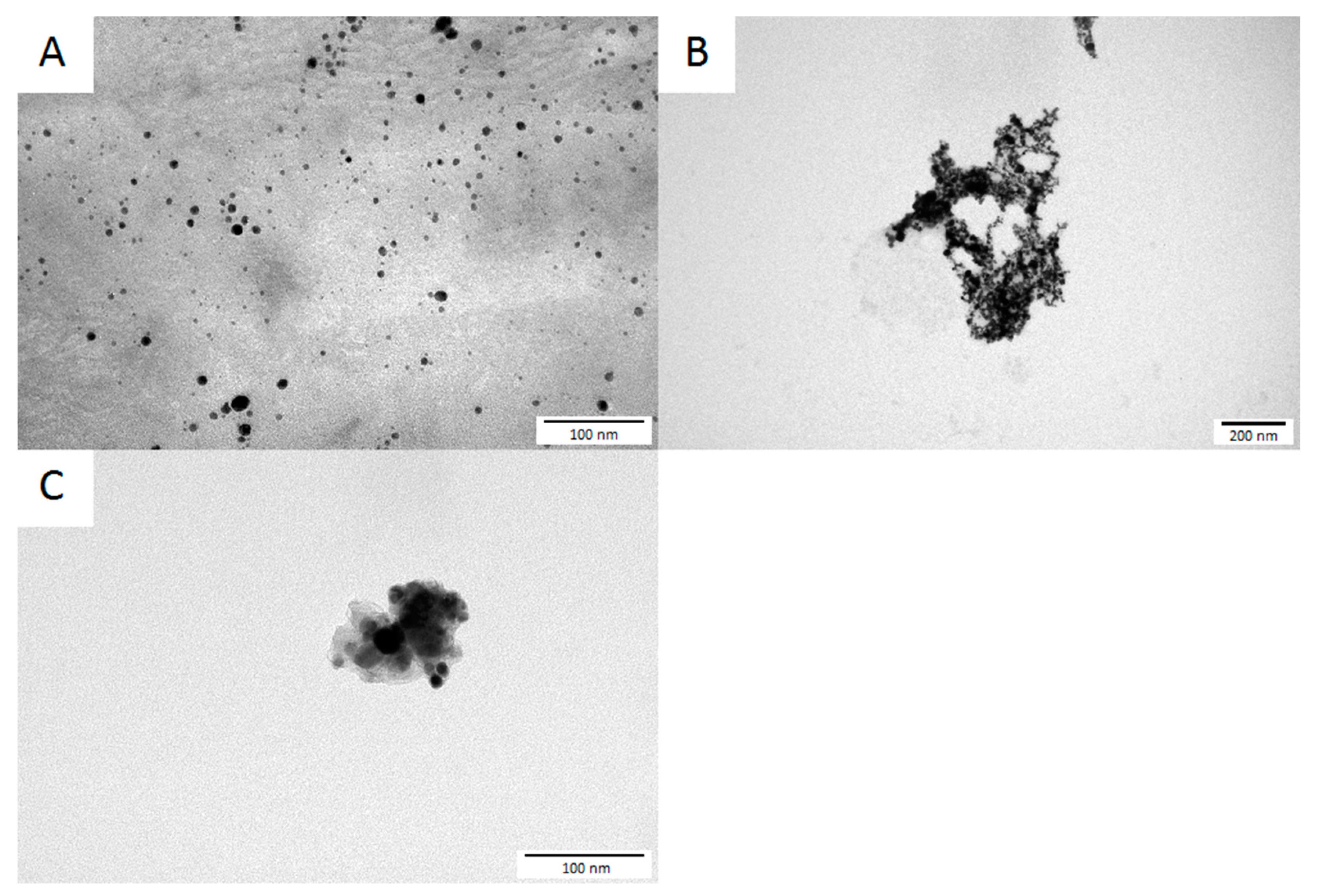
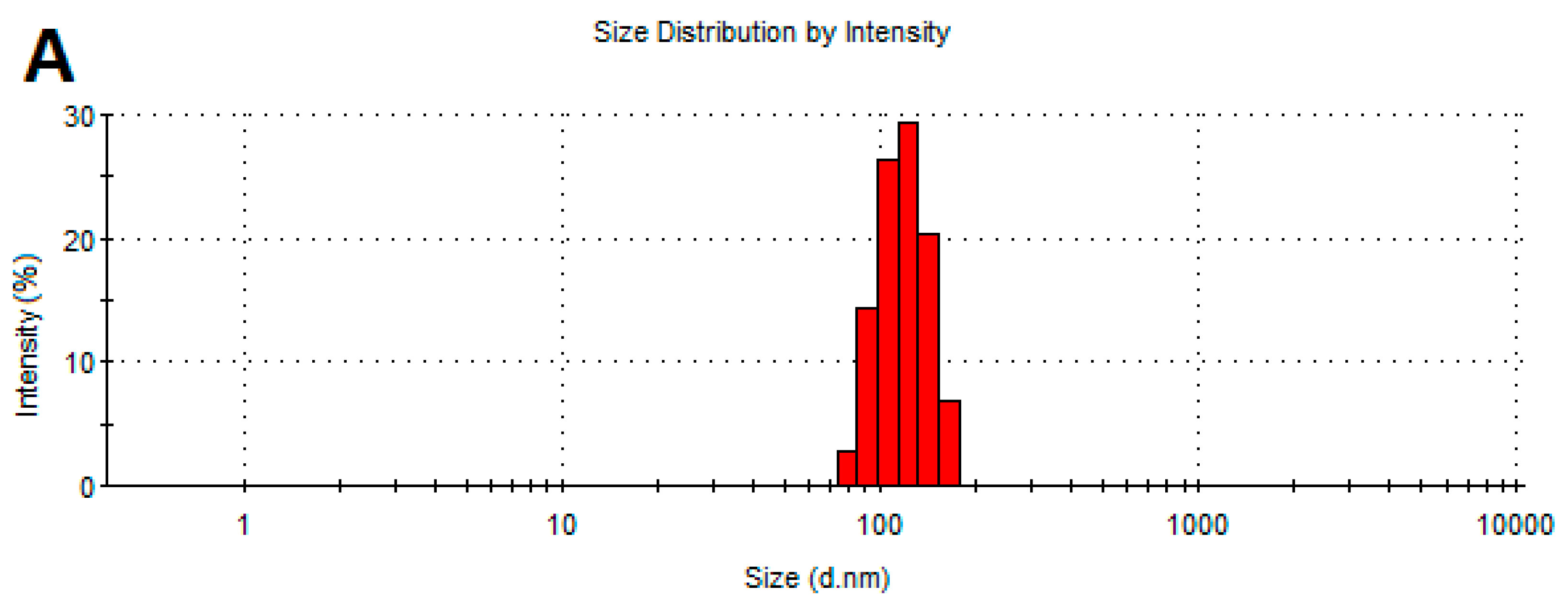


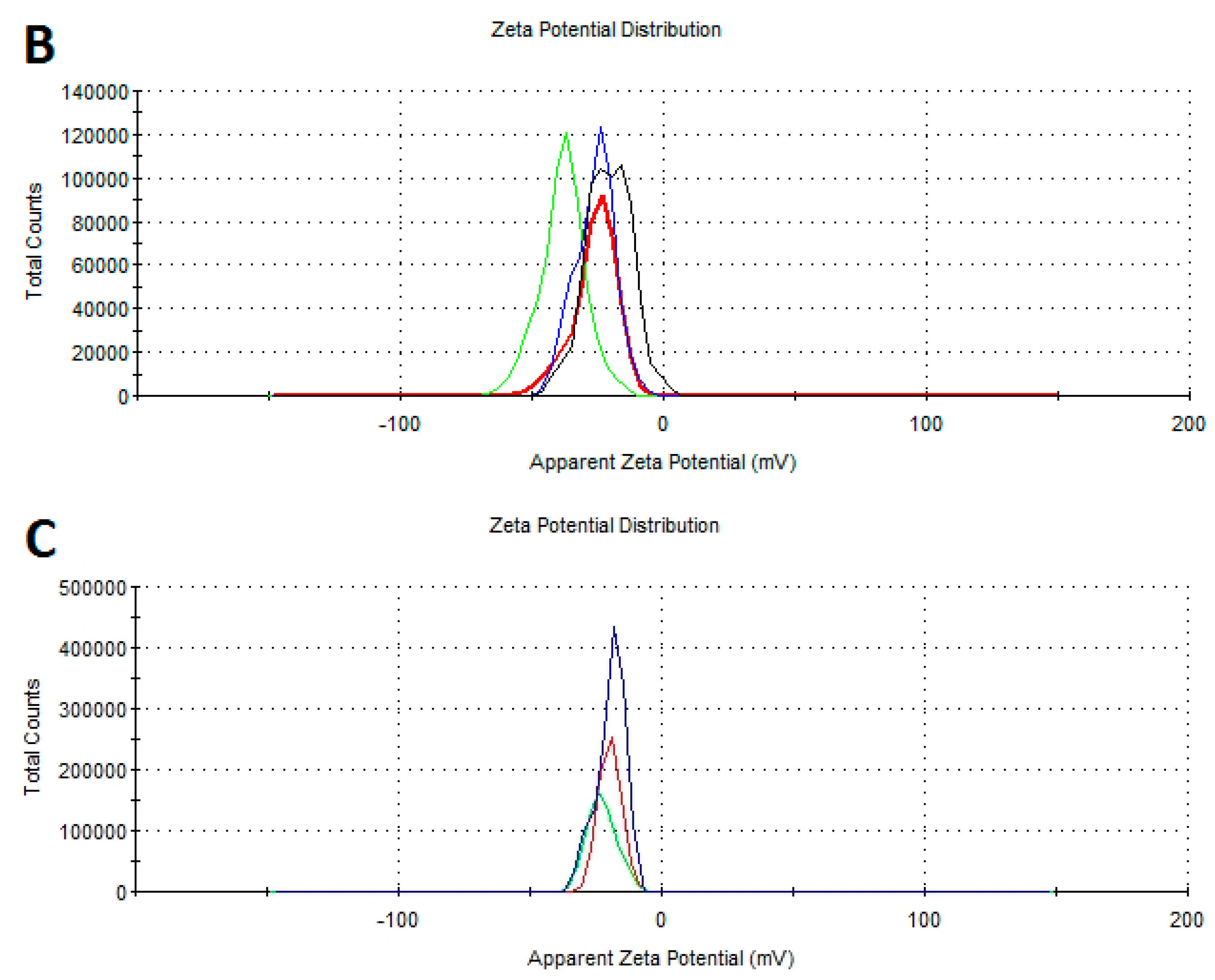
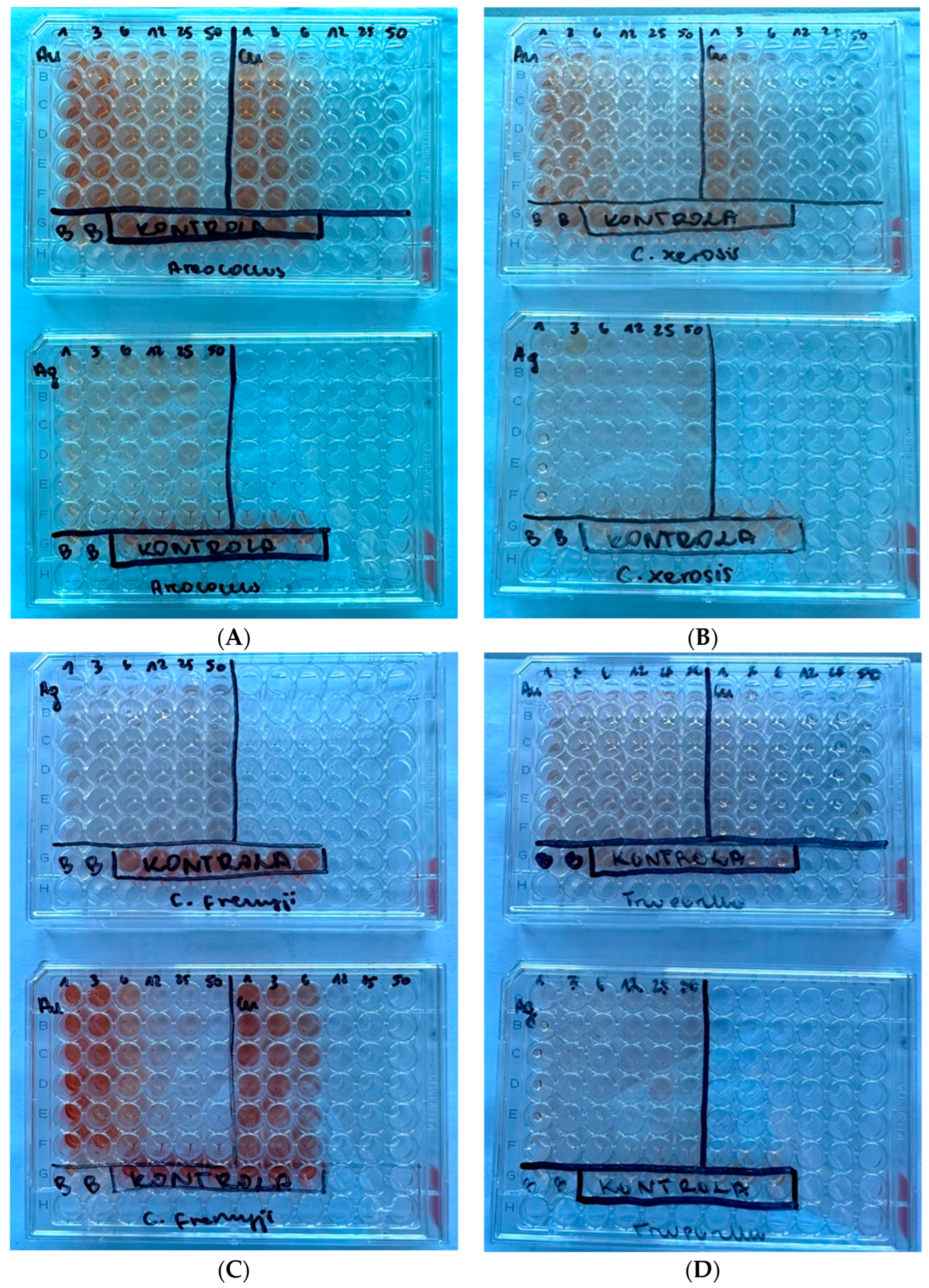

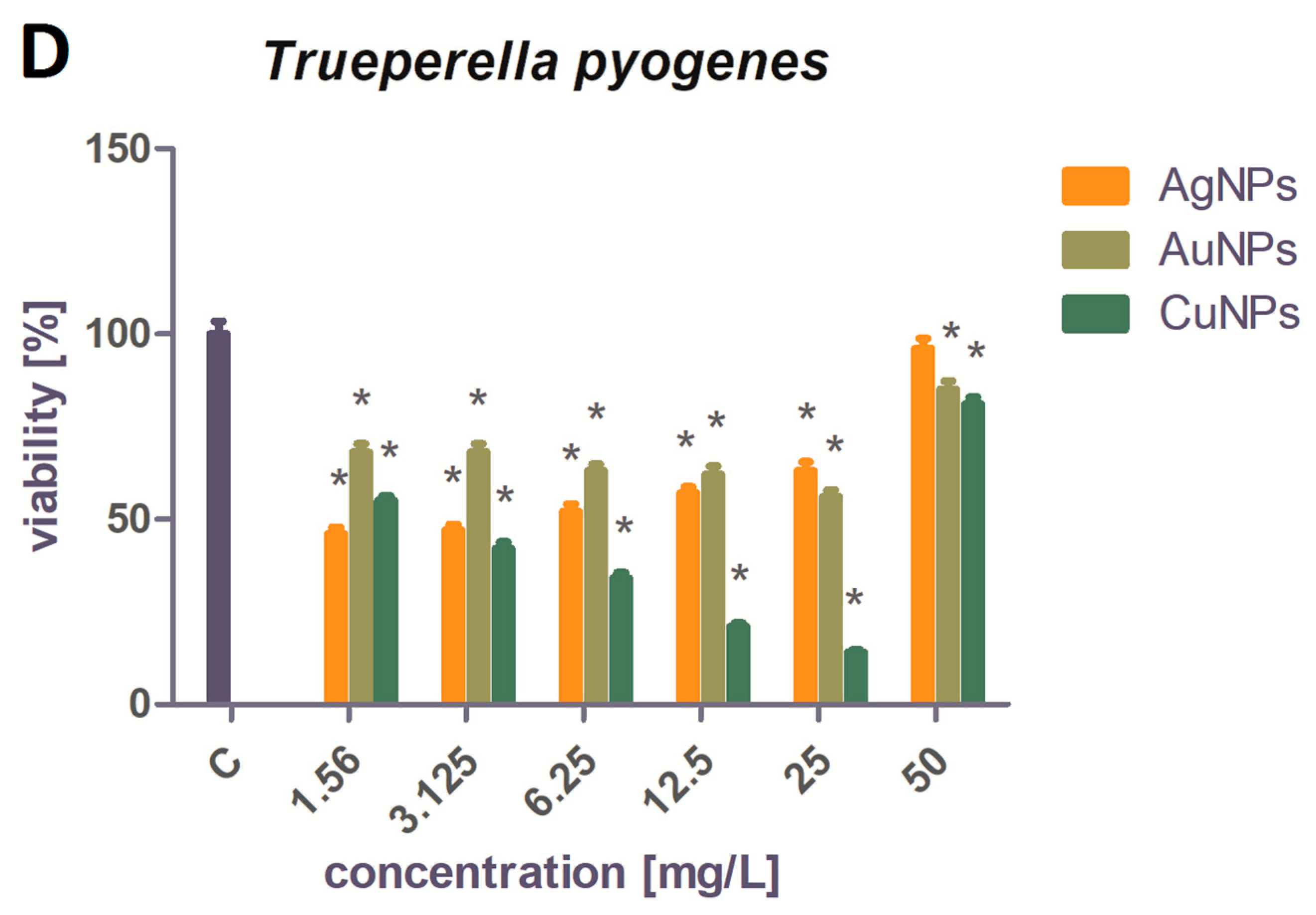


| Matched Pattern | Score Value | NCBI Identifier |
|---|---|---|
| Aerococcus viridans | 2.10 | 1377 |
| Corynebacterium freneyi | 2.25 | 134,034 |
| Corynebacterium xerosis | 2.14 | 1725 |
| Trueperella pyogenes | 2.02 | 1661 |
| AgNPs | AuNPs | CuNPs | |
|---|---|---|---|
| Zeta potential | −48.2 | −21.6 | −22.4 |
| Pathogen | Type of Study | NPs Used | Results | Source |
|---|---|---|---|---|
| A. viridans | Agar well diffusion method | AgNPs | Mean zone of inhibition was 22 ± 0.41 mm. | [25] |
| CuNPs | Mean zone of inhibition was 10 mm and 13 mm. | [26] | ||
| C. xerosis | Agar well diffusion method | AgNPs | Mean zone of inhibition was 13.6 ± 0.50 mm. | [27] |
| In vitro | rGO/CuNPs | Bacterial viability was reduced by ~99.6%. | [28] | |
| T. pyogenes | MIC | AgNPs | Minimum inhibitory concentration was 1.0 mg/L. | [29] |
| MBC | Minimum bactericidal concentration was 1.5 mg/L. | |||
| In vitro | Inhibition of biofilm formation was reduced by over 90%. | |||
| The level of lactate dehydrogenase was four-fold higher compared to the control. | ||||
| The level of reactive oxygen species was two-fold higher compared to the control. |
Disclaimer/Publisher’s Note: The statements, opinions and data contained in all publications are solely those of the individual author(s) and contributor(s) and not of MDPI and/or the editor(s). MDPI and/or the editor(s) disclaim responsibility for any injury to people or property resulting from any ideas, methods, instructions or products referred to in the content. |
© 2024 by the authors. Licensee MDPI, Basel, Switzerland. This article is an open access article distributed under the terms and conditions of the Creative Commons Attribution (CC BY) license (https://creativecommons.org/licenses/by/4.0/).
Share and Cite
Kalińska, A.; Wawryło, C.; Tlatlik, W.; Gołębiewski, M.; Kot, M.; Lange, A.; Jaworski, S. Preliminary In Vitro Evaluation of Silver, Copper and Gold Nanoparticles as New Antimicrobials for Pathogens That Induce Bovine Locomotion Disorders. Int. J. Mol. Sci. 2024, 25, 9494. https://doi.org/10.3390/ijms25179494
Kalińska A, Wawryło C, Tlatlik W, Gołębiewski M, Kot M, Lange A, Jaworski S. Preliminary In Vitro Evaluation of Silver, Copper and Gold Nanoparticles as New Antimicrobials for Pathogens That Induce Bovine Locomotion Disorders. International Journal of Molecular Sciences. 2024; 25(17):9494. https://doi.org/10.3390/ijms25179494
Chicago/Turabian StyleKalińska, Aleksandra, Cezary Wawryło, Wiktoria Tlatlik, Marcin Gołębiewski, Magdalena Kot, Agata Lange, and Sławomir Jaworski. 2024. "Preliminary In Vitro Evaluation of Silver, Copper and Gold Nanoparticles as New Antimicrobials for Pathogens That Induce Bovine Locomotion Disorders" International Journal of Molecular Sciences 25, no. 17: 9494. https://doi.org/10.3390/ijms25179494
APA StyleKalińska, A., Wawryło, C., Tlatlik, W., Gołębiewski, M., Kot, M., Lange, A., & Jaworski, S. (2024). Preliminary In Vitro Evaluation of Silver, Copper and Gold Nanoparticles as New Antimicrobials for Pathogens That Induce Bovine Locomotion Disorders. International Journal of Molecular Sciences, 25(17), 9494. https://doi.org/10.3390/ijms25179494






